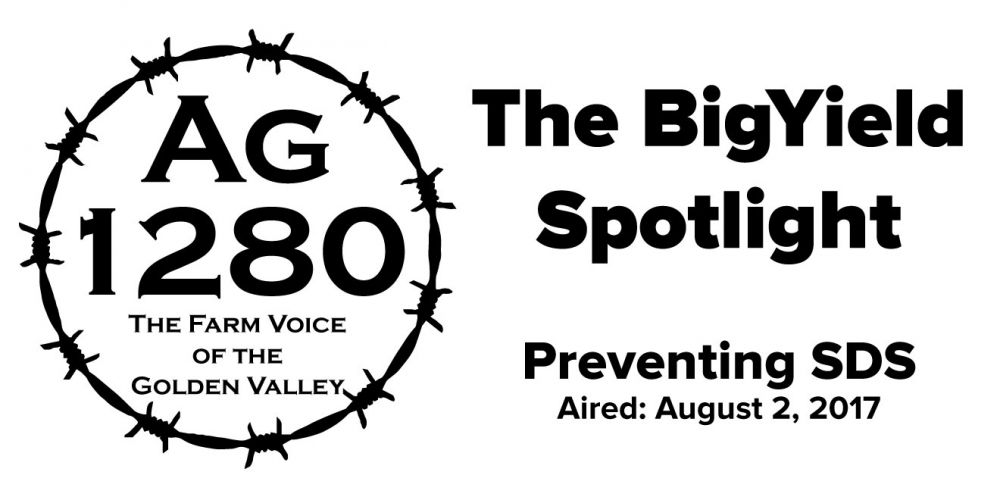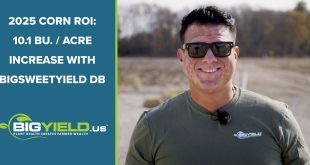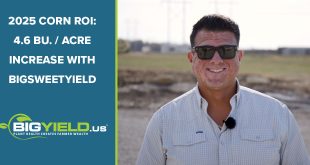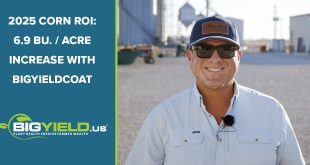
Landon Teal discusses what SDS is and how growers can prevent it.
Listen to the BigYield.us team and Kyle Hill, Ag 1280 Farm Director, each Monday, Wednesday, and Friday on Ag 1280 KDKD-AM. The segments air at 7:15 am and again at 12:15 pm.
This segment originally aired on August 2, 2017.
Audio Transcript
Kyle: Welcome back for another BigYield Spotlight. I’m Kyle Hill, visiting with Landon Teal of BigYield.us. Welcome back.
Landon: Thanks Kyle.
Kyle: Today we’re talking about sudden death syndrome and that impact on soybeans. Give us some background information on SDS Landon.
Landon: Sudden death syndrome is a fusarium pathogen that can overwinter in soybean cyst nematodes, crop residues, or in the soil itself. Fields infected with this pathogen or cyst nematodes are at greater risk of infection. Also, fields that are planted early into those wet, cool, compacted soils will also be affected by this.
Kyle: And those cool, wet, compacted soils are something we had issues with, with all the rain that came through this season. So, we could be seeing quite a bit of SDS this year.
Landon: Yeah, I have actually seen it earlier this year as well. Some of those plants haven’t even started flowering yet and I’m already starting to see those plant leaves be affected. We know that’s the case.
Kyle: How exactly is the plant affected if the pathogen and nematodes reside in the soil?
Landon: This is present in fields and attacks the seedlings and the roots near the soil surface. As you plant, whether that seed got down to the right depth or if it’s laying there on the soil surface, that is when you really see it. From there it produces a toxin that migrates through the stem and into the canopy of the plant. That is when we will see it on the plant tissue. You will see that necrosis there. And unfortuneately even though the infection happens at such an early stage, growers will not see any symptoms until the plants reach reproductive stages.
Kyle: How much loss could potentially be brought to a soybean field that is suffering from SDS?
Landon: Well here at BigYield, we have researched this topic several times and found ways to battle SDS. We have found that SDS has a potential to have a 20% yield loss. This may not seem like much but depending on the year, this could be a huge factor, especially if the guys have already had to replant or continue to have weather conditions that aren’t favorable. This could have more impact on different fields.
Kyle: So if a grower isn’t going to see symptoms until later in the season, are there any management practices they can use to reduce yield loss?
Landon: Unfortunately, growers have very limited options. Conventional fungicides are ineffective at that point because we have reached the reproductive stages. This disease isn’t controllable by a fungicide. Crop rotation can help, but is not always an effective way to reduce the pressure. The best option is selecting a variety that has some resistance to SDS or using a biological.
Kyle: And I understand you have a biological available through BigYield.us. How can this biological help reduce sudden death syndrome?
Landon: Yeah, with our BigBioYield we use a poly-microbial blend to help reduce and suppress nematode and fungal pathogen growth. Secondly, it includes plant growth promoting rhizobacteria that really increases early root development to limit infection to the roots.
Kyle: Now if anybody has any questions about BigBioYield or any of the other products you have available at BigYield, how can they get ahold of you?
Landon: They can contact us online at BigYield.us, they can call us at 816-773-6096, or stop by the research farm in Garden City.
Kyle: Landon we thank you very much for visiting with us again, giving us an update about what you guys are working on there on the farm along route 7 in Garden City.
Landon: Thank you Kyle.
 BigYield High Yield Soybeans, High Yield Corn, and High Yield Wheat
BigYield High Yield Soybeans, High Yield Corn, and High Yield Wheat



